Social listening or social media listening is a well-known but frequently under-utilized marketing tool. It allows companies to take advantage of huge amounts of digital data, spanning the globe, to identify and respond to recent changes in audience behavior and preferences.
Global digital activity is at unprecedented levels, with six billion people projected to be using social media worldwide by 2028. With such an abundance of data available, there’s more information to hand about what people want than ever before.
As a result, businesses conducting social listening can use sentiment analysis to identify trends and improve their marketing strategies.
Social listening also enables businesses to:
- track the success of marketing campaigns in real time
- keep an eye on brand health
- fine-tune their strategies to appeal to target consumers
- identify opportunities for improved customer engagement
Read on to learn more about social listening. In this blog post, you’ll discover:
- what social listening is
- how social listening can benefit your business
- five best practices for using social listening to identify market trends
- social listening top tips to keep up with online marketing trends in 2025
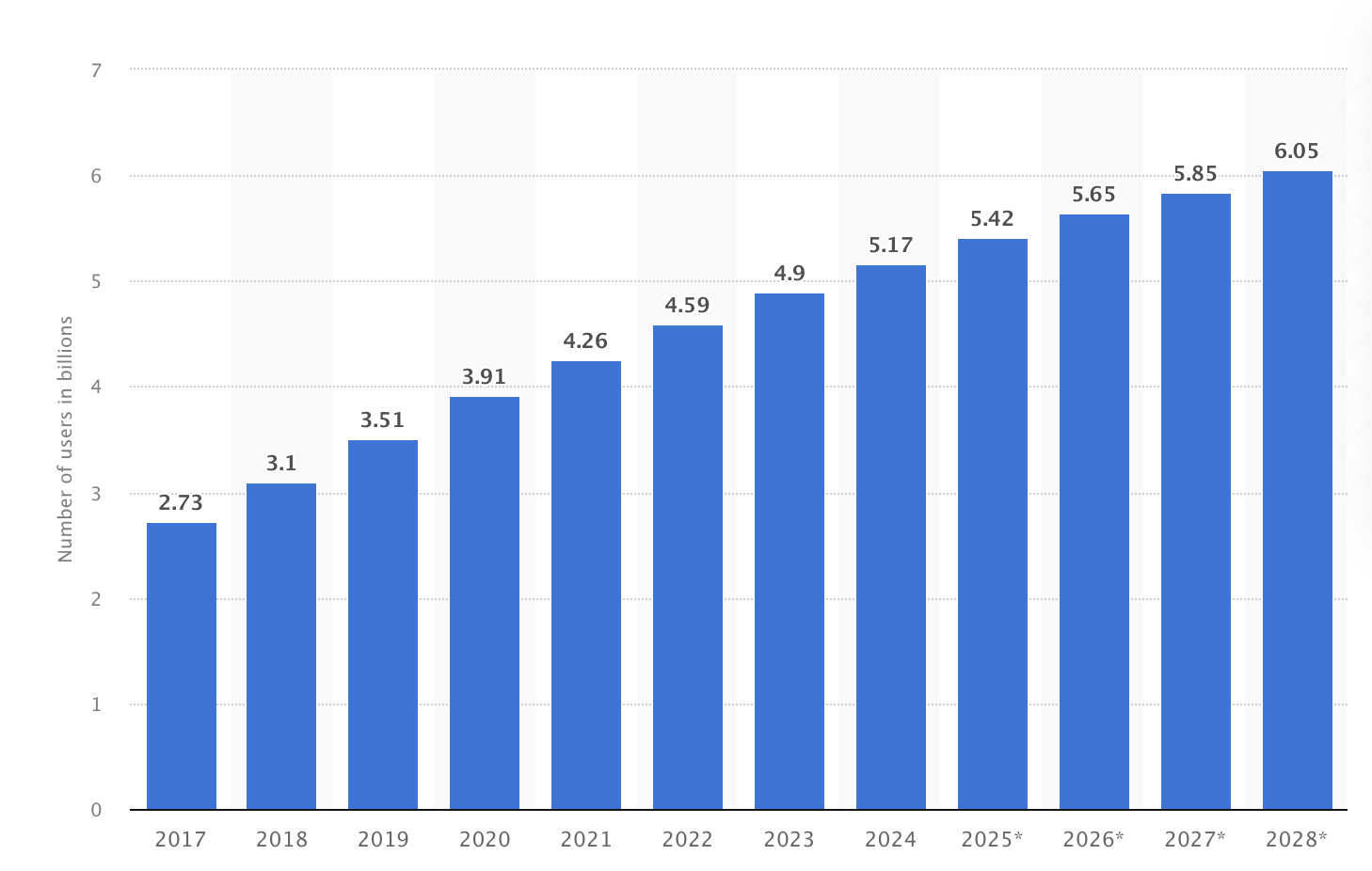
Screenshot taken from Statista
What Is Social Listening?
Put simply, social listening is the practice of monitoring and analyzing online conversations about your business to gain insights from what’s being said about you, your industry, and your competitors.
These insights can then be used to inform future business decisions in marketing, product development, customer support, and more.
Social listening can encompass a range of techniques, and there’s no one-size-fits-all approach. Depending on the size of your business, its genre, the number of engaged online users, and your social media presence, you’ll be able to conduct social listening on different levels.
Techniques include:
- Tracking mentions across social media platforms through hashtags, keywords, mentions, and more.
- Monitoring competing brands and keeping an eye on their engagement and the popularity of their campaigns.
- Following trending content to see which topics/products garner the most engagement.
- Conducting a sentiment analysis on the most relevant topics for your brand or business.
Social listening isn’t just a relevant tool for consumer-facing businesses. It can have just as many use cases for B2B, helping you achieve your BANT sales goals by qualifying relevant prospects.
For example, just as B2C enterprises can leverage influencers to improve engagement, partnering industry content creators can expose B2B companies to new audiences and generate leads for qualifying.
Social Listening vs. Social Monitoring
When you begin your research into social listening, you’ll likely come across the term “social monitoring.” Although social monitoring is similar to social listening, there are some key differences between them.
You should choose between social listening and social monitoring depending on whether you aim to generate more actionable insights or simply respond to customer queries efficiently.
Overall, social monitoring is more of a short-term solution, and social listening is more long-term.
Scale
Social media monitoring exists on a much smaller scale than social listening. Where social monitoring focuses on customer queries and complaints responded to by support reps, social listening looks at how people are discussing your company, industry, and competitors on a global scale.
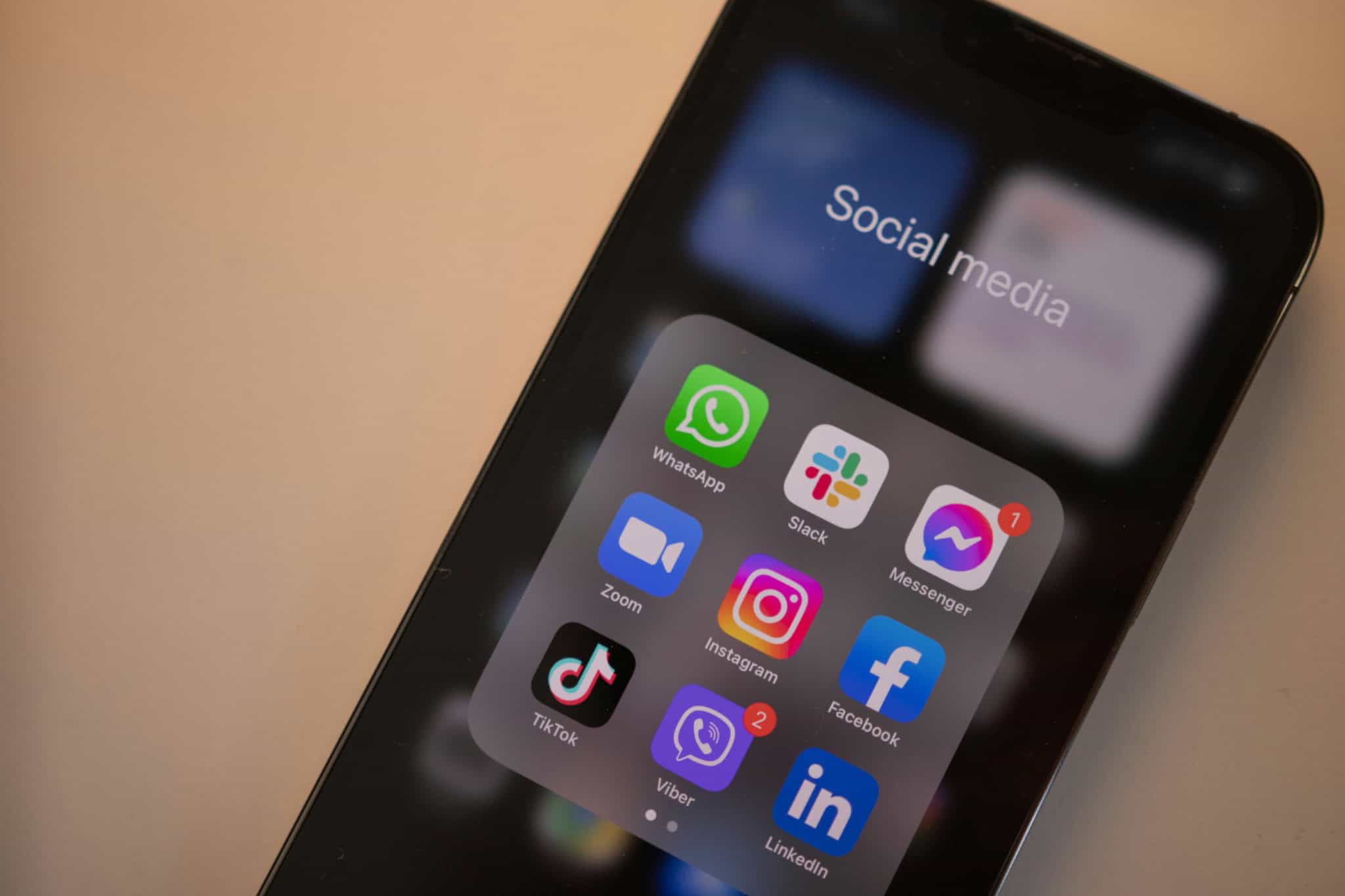
Free-to-use image sourced from Unsplash
Respond or act
Social monitoring shows where and how people are discussing your business, whereas listening will reveal the factors and issues that are driving online discourse.
So, through social monitoring, you’ll receive and respond to individual customer complaints. On the other hand, with social listening, you’ll be more widely proactive, analyzing many online comments to discover fresh opportunities.
This means social listening takes a more long-term approach than monitoring. Instead of issue resolution, you’re looking to make significant changes to your branding, product line, etc. in order to drive growth.
To identify and respond to market trends, for example, social listening is the better option.
Automation
Social listening is slightly less capable of being automated than monitoring. Social monitoring can be automated with product or brand mention alerts, whereas social listening requires the more complex task of listening to conversations online that might not mention your brand name specifically but are still extremely relevant. You’ll then need to transform this data into actionable insights.
Benefits of Social Listening to Identify Market Trends
Once you’ve decided that social listening is the right choice for your business, you’ll be able to:
Monitor brand reputation
Social listening is an essential tool when it comes to protecting your brand reputation and building a positive image of your business. You can monitor customer sentiment over time and rectify concerns or amplify positivity.
By monitoring conversations and tracking relevant data, you’ll see your brand from the client’s perspective. What do they like or dislike? How would they make improvements or changes?
In the data, you’ll see if your business visibility is trending up or down, what type of content generates the most engagement, and which demographics are most responsive to your brand messaging.
Conversational data will also expose a social media crisis before it arises, as well as new and developing market trends. You’ll then be able to decide how best to respond to these changes.
Gain a better understanding of your customers
As mentioned above, social listening will collect and categorize customer data so that you’re able to draw insights concerning target demographics and create more realistic B2B buyer personas.
You can identify particular issues your customers face and their niche wants and needs. You’ll also be able analyze individual buyer behaviors. This will tell you what your audience expects from your business.
For example, through social listening, you might come across a social media exchange concerning a product/service you offer that users love. You may also find suggestions for new releases or ways to correct or improve existing features.
Find honest feedback
Recording customer calls via call center solutions is a great way to gather honest feedback. However, this type of call tends to focus on issue resolution and customer problems rather than providing feedback more universally.
Social listening will complement your call center feedback by showing you the way your audience discusses your products or services online. Rather than just focusing on issues, customers will also point you to features they like in competitor products, UX or navigation of competitor’s websites, and other information related to the customer experience.
All this creates opportunities for your business and allows you to respond directly to market trends. The more data you collect, the better informed your decisions will be and the more successful your business roadmap will be.
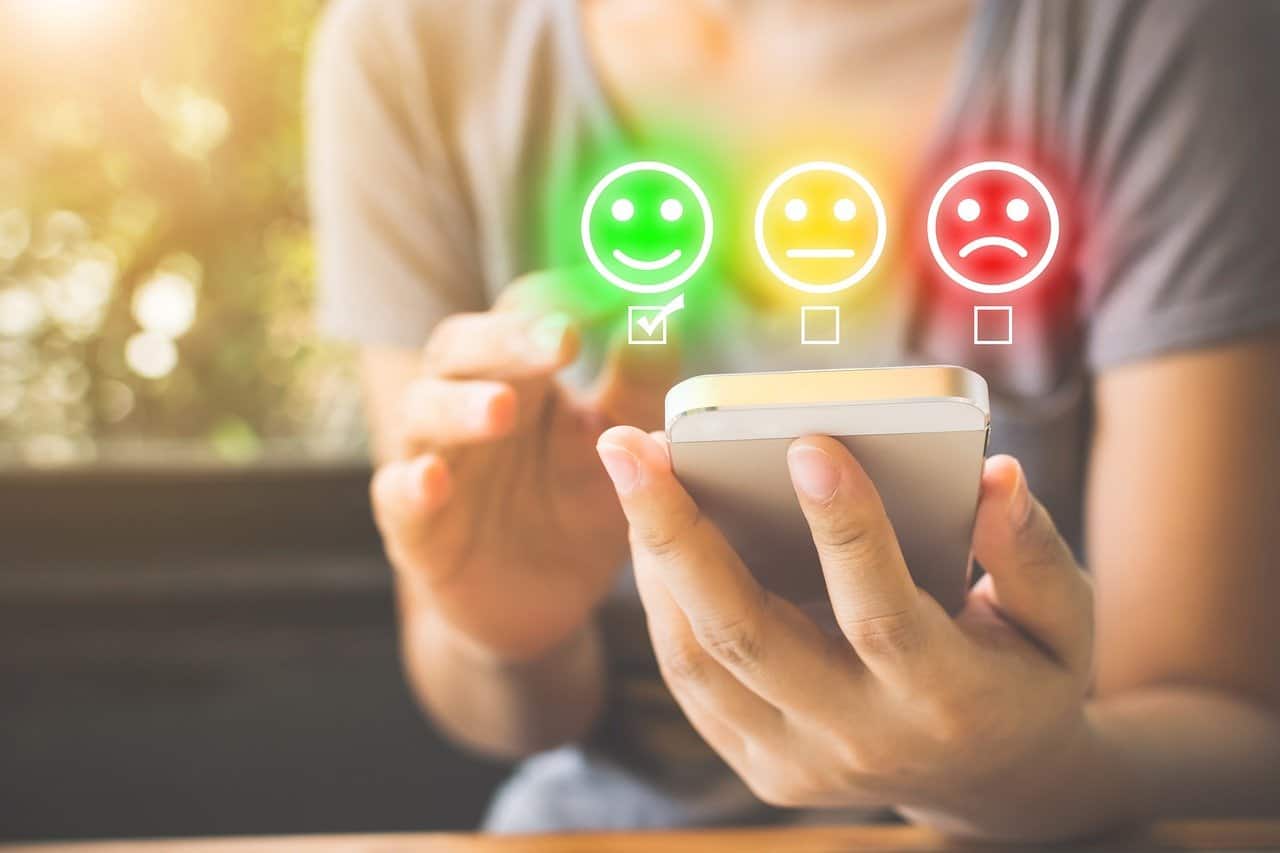
Free-to-use image sourced from Pixabay
Track sentiment change
Tracking sentiment doesn’t just mean the number of mentions but also the sentiment or attitude behind a comment or conversation. Sentiment scores will be allocated based on positive or negative mentions over time and thus measure the impact of your marketing tools.
Natural language processing (NLP) techniques are employed to classify text and the emotions behind it. This allows you to quantify general opinion surrounding your business, a particular product, or a campaign.
In the long term, businesses can gauge public opinion on a product from its first release and far beyond.
Uncover growth opportunities
Lastly, social listening is an essential tool for uncovering growth opportunities and industry trends. You’ll uncover what people are frequently searching for online, from questions like, “What is B2B sales?” to cheaper alternatives for existing products.
When it comes to marketing, social listening will highlight a range of trends in real time. This is especially important when it comes to micro or fleeting trends that you need to engage with instantly for maximum impact.
For long-term trends, uncovering them early will allow you ample time to create relevant content and drive brand growth before your competitors catch on.
Finally, megatrends or global issues can be serious industry disruptors. Uncovering and addressing these early can often provide growth opportunities beyond your industry and existing demographic. They’ll help your business stay relevant and prepared to evolve when necessary.
5 Best Practices For B2B Social Listening
Now, we’re going to take a look at five best practices that you can follow for B2B listening.
Collect the right data
The first steps in social listening are to set goals, pick your listening channels, and outline all relevant search terms. This helps create your strategy and approach.
Decide whether you’re using your data to identify partnerships, improve your brand reputation, respond to consumer demands, or something else. From here, you can focus your data collection on a specific area and narrow your focus.
Next, you should use existing insights and data to determine where you should be listening. Does your audience exist on X (formerly Twitter), LinkedIn (for B2B), or TikTok (for a younger demographic)?
If you can identify where your clients engage most, social listening will gather a larger quantity of more relevant information.
Finally, you should set up some social listening tools. Just like a risk management platform this type of software continuously tracks and analyzes data. Social listening tools do this by using automated keyword searches, tracking hashtags, and categorizing comments based on sentiment.
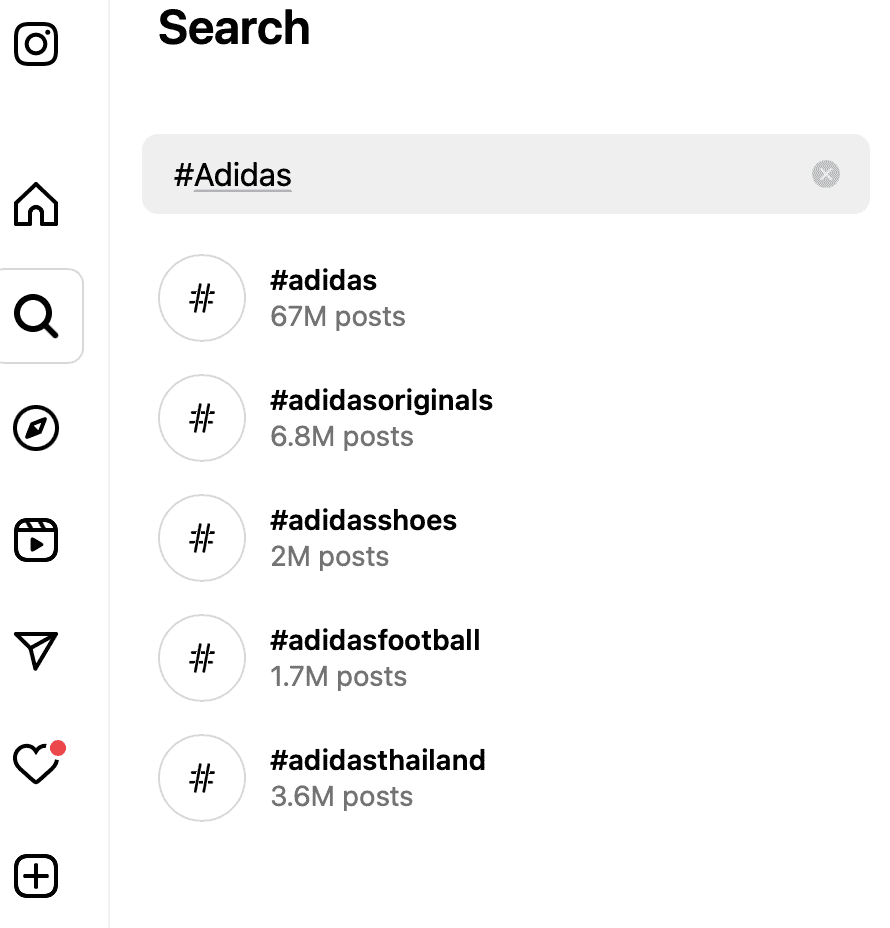
Screenshot taken from Instagram
Keep an eye on competitors
On setting up your social listening tools, you should keep an eye on your existing competitors and also emerging ones.
Watching how a rival product or service is received can save you time in product development and eliminate trial and error from your business processes.
You can also see what’s working for your competitors and emulate their success. For example, a similar brand might have launched a successful marketing campaign. Tuning in to how it was received by customers, you can use their insights to replicate or even exceed their success.
Leverage influencer marketing
Staying up to date with influencer marketing is an essential component of modern-day digital business strategies. Social listening can make this process easier by helping to identify content creators and collaborators that best suit your brand and are most likely to increase your engagement and reach.
By analyzing conversation data, you’ll be able to see which influencers your audience currently engages with as well as who to partner with in order to extend your reach.
The best social listening tools will list potential influencer partners based on how often they mention other brands that are similar to yours and whether they appeal to your target demographic or those in the same industry.
Resolve customer issues
Prompt issue resolution encourages brand loyalty and encourages existing customers to recommend your business to their connections. While many customer issues can be resolved through help desks and customer support phone lines, there are plenty of customers still reaching out online for help.
Social listening will identify these comments and queries and direct your attention to them. This results in immediate and transparent issue resolution. Once you’ve directed support to a particular comment or social media post, other users will also be able to see this interaction.
This not only helps existing customers facing the same problem but also shows potential customers how committed your brand is to swift customer service.
Improve engagement with a multichannel approach
The most effective social listening strategies will listen to numerous different channels at once, beyond your own brand’s social media pages. To do this, you can use a social media tool that implements AI-powered listening.
AI can identify relevant conversations and key content themes even without direct mention of your business name. This means that you can offer support where it’s needed without the need for direct messages.
AI also improves engagement by helping you stay on top of the most relevant new topics.
Social Listening Top Tips
Finally, before you embark on a social listening strategy, consider the following top tips to get the most out of the process:
Listen for the most relevant search terms and topics
To start, create a shortlist of the most relevant terms and phrases you plan to monitor. This should include your brand name, specific products, and related terminology.
You can even track the mention of competitors and their services. Make sure to update this list with the launch of new products/services and as your business changes over time.
If you’re just starting out, try using the advanced search features on social media like X to narrow your search and bring up targeted results.
When you have more to invest in social listening, consider using a social listening tool that can monitor more keywords, phrases, and hashtags over a wider range of channels.
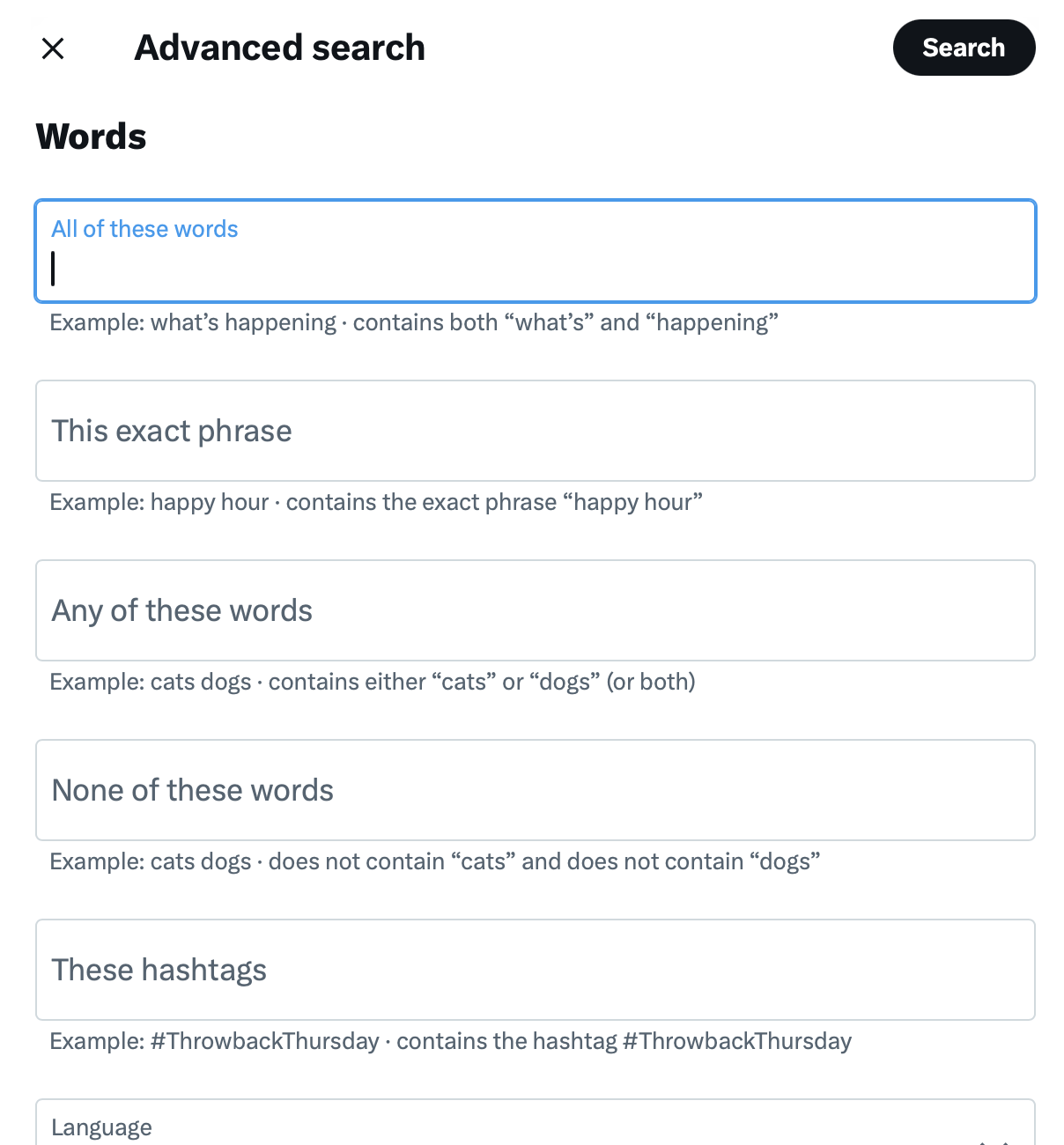
Screenshot taken from X.com
Monitor your metrics
Social listening will provide instant metrics that can be leveraged to make key business decisions. Keep an eye on things like your customer sentiment score, frequency of brand mentions, and online ratings over time.
Share your findings
Finally, remember to share your findings across your entire company. They can provide valuable insights for various departments, from customer support to product development and content marketing.
Start Social Listening Today and See Immediate Business Improvements
With social listening, businesses are able to stay ahead of market trends and leverage data to achieve significant business growth.
Client needs are identified faster and more accurately, competitor activities are tracked in real time, and long-term trends are monitored to improve brand performance and predict future market developments.
Design a social listening strategy today and see the success of your B2B marketing campaigns skyrocket.


